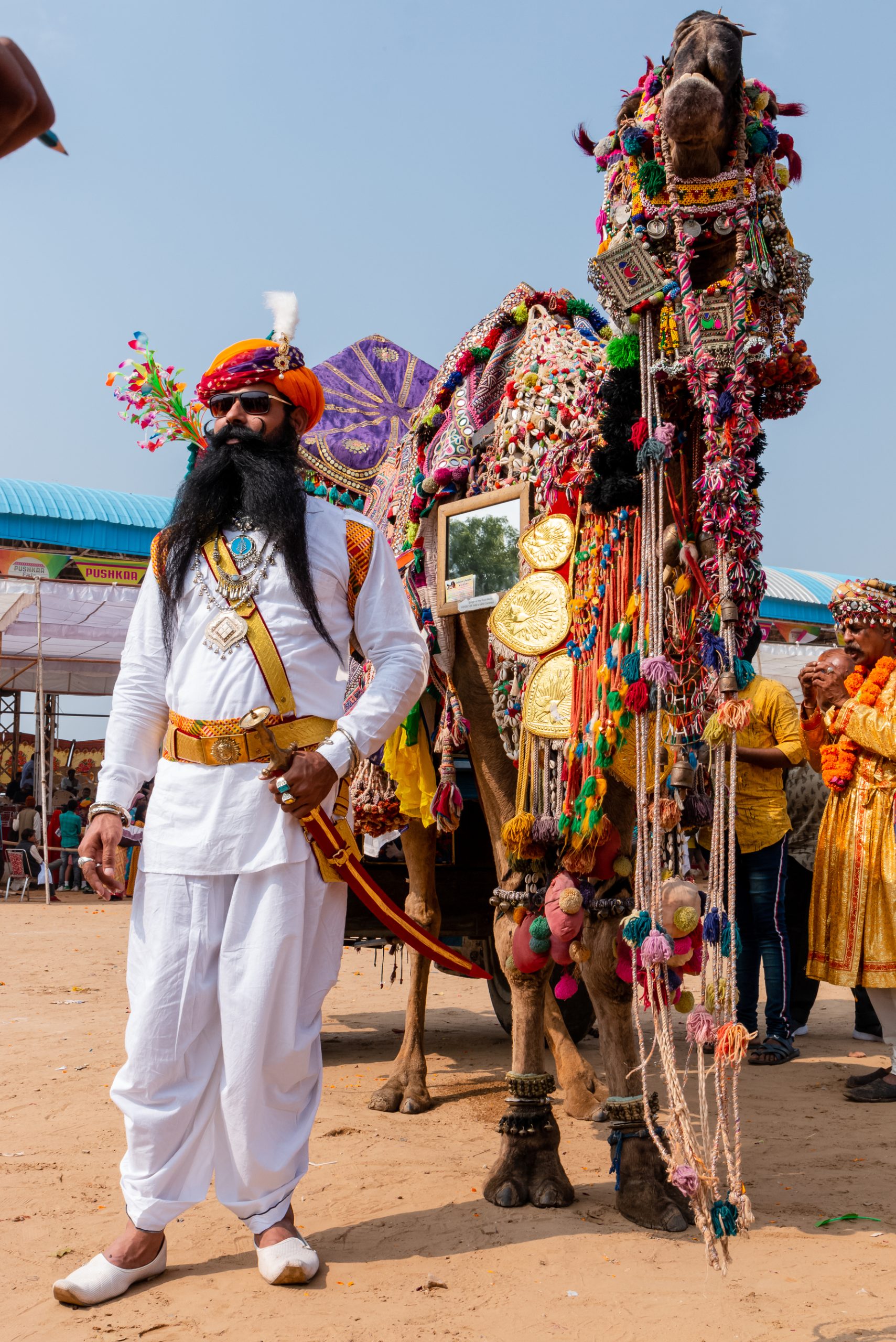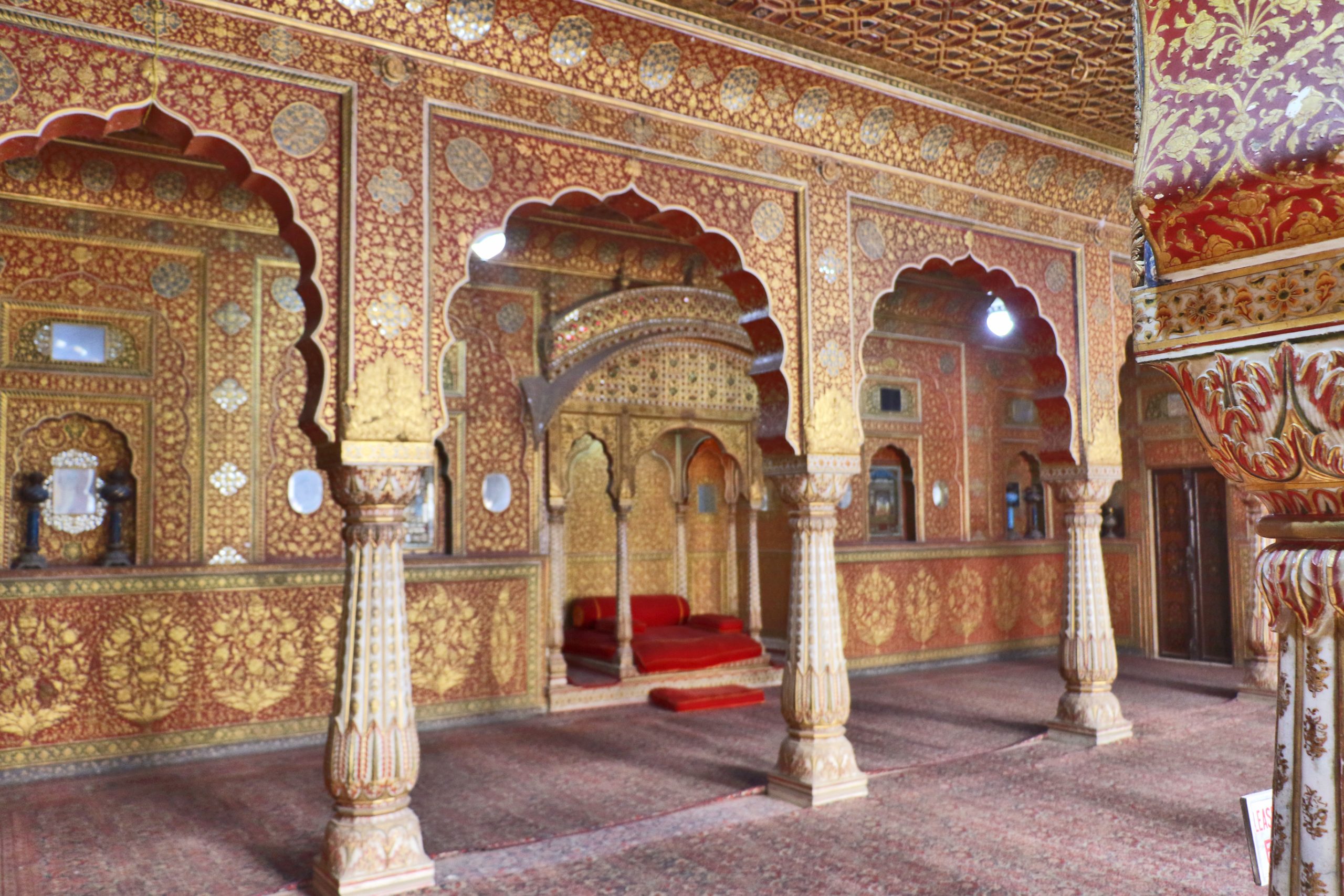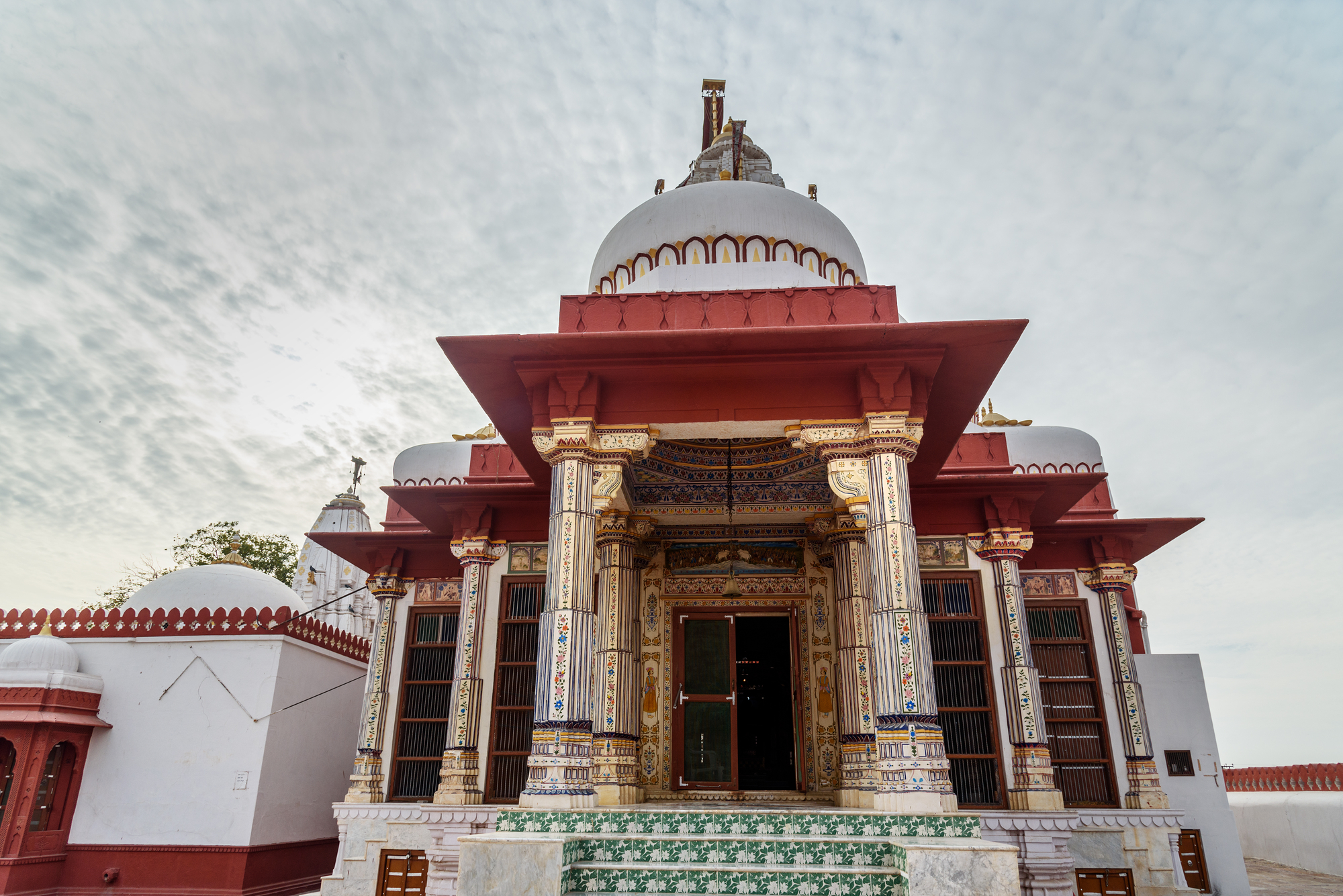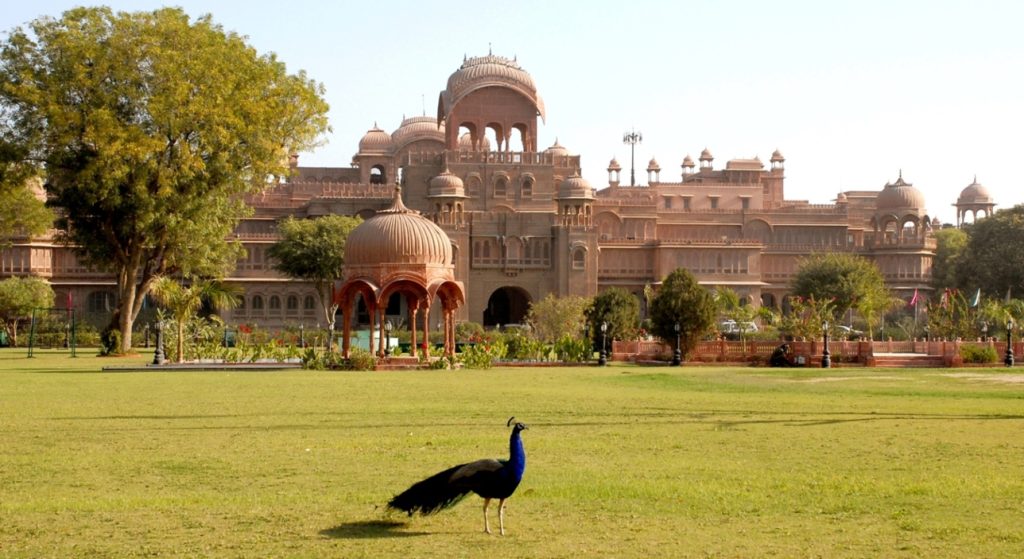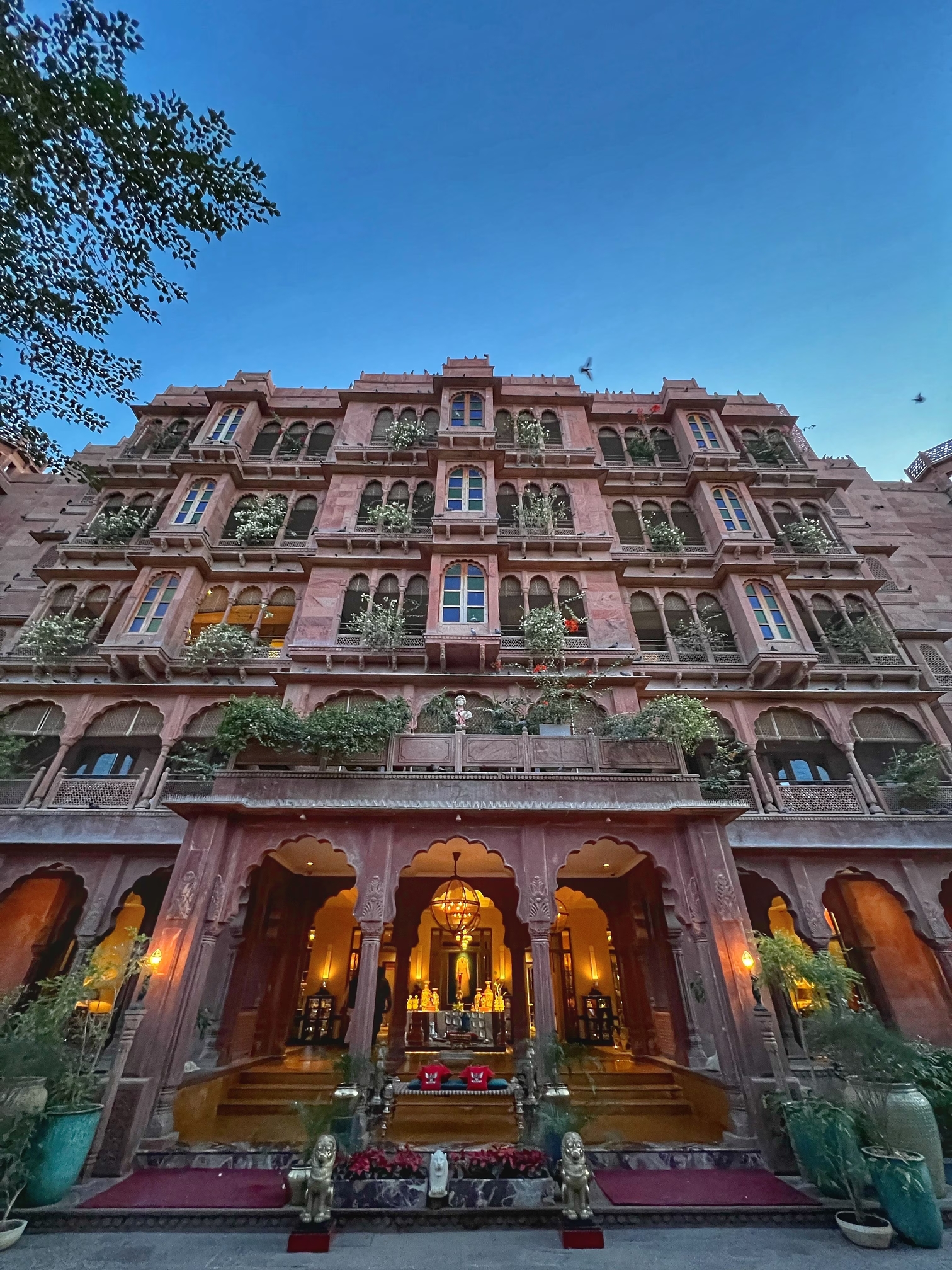If you’re looking to explore the red city, take notes!
By Kunjal Kothari
Last winter, we took our daughters to Bikaner to visit our ancestral home. Two jam packed days later, we left Bikaner with our hearts (and stomachs) full. As we rediscovered our hometown together, it was wonderful to see our children gain a newfound appreciation of their heritage and culture.
After driving through the dusty Thar desert, the Red City hits you with its sights, sounds and smells. A relatively young city, Bikaner was founded by Rao Bika of Jodhpur in the late 15th Century. As a stop on the Silk Road between Gujarat and Central Asia, Bikaner prospered, and soon the barren Jungladesh was thriving.
DAY ONE: THE CITY
First Stop
Nothing exemplifies Bikaner’s position on a crossroads more than the Junagarh Fort, and this is where you should begin your first day in Bikaner. One of the few forts in Rajasthan not built on a cliff, Junagarh has withstood all attacks apart from a one-day occupation in 1534. The sturdy exterior belies the luxury within.
As soon as you walk past the ticket office, you’re going to want to stop to take photos in front of the magnificent, bifurcated staircase. Take the shot, but don’t linger too long, because you will want to take your time wandering through the remarkable mahals inside. Make your way up the narrow slope to courtyards with marble fountains lined with intricately- carved jharokas (protruding balconies) and jalis (latticed windows) made from the red sandstone that gives Bikaner its nickname.
Off each of the courtyards are spectacular rooms made by the many Rajas of Bikaner. In Baadal Mahal you will find Rajasthan’s ubiquitous royal blue cloud motif. The sumptuous Karan Mahal sparkles as light shines off the ornate red and gold work on the walls and ceiling. Ingeniously designed mirrors in the Raja’s bedroom in Chandra Mahal warned the king of any intruders. And finally, the weapons and armour in the Ganga Singh Hall will remind you that the Rajputs were first and foremost warriors.
Second Stop
Next, visit the Rampuria Havelis. The havelis are the mega mansions of their time, built by the Rampurias, a wealthy merchant family. Walk along the eponymous street, admiring the carved red sandstone exteriors of the havelis to finally end up at the only haveli that is open to public. Built in the 1920s, Bhanwar Niwas is now a heritage boutique hotel with 14 whimsical guest rooms that evoke a bygone era. Audio tours of the hotel are available, and I suggest having the Rajasthani thali for lunch in the grand, high-ceilinged dining room.
If you’re lucky, you may run into the owner, who still resides on the property and is a vast repository of information on Bikaner’s history, culture, and arts.
Third Stop
After lunch, make your way to Bhandasar Jain Temple. Built in the late 1400s, legend has it that instead of water and mortar, the temple was built with 40,000kgs of ghee. It is said that on hot days, the ghee still seeps out of the floors and walls. The paintings and sculptures within the temple are exceptionally beautiful examples of Matheran and Usta art.
Right next to Bhandasar Jain Temple, is the Laxminath Hindu Temple. Constructed around the same time as Bhandasar, Laxminath is the first temple built by Bikaner’s royal family. Dedicated to Vishnu, the walled temple hums with the energy of worshippers praying and singing devotional songs.
No visit to the old city would be complete without sampling the namkeens and sweets that Bikaner is famous for. While each person you ask will have their own favourite shop, I recommend Roopji in Bada Bazaar and Jaisraj Shivraj in Chaipatti. You can also visit the shops around Kote Gate, where the smell of spices fills the air. Make sure you eat the crispy spiced bhujia, fried kachoris, delicate saffron feeni and crispy ghewar glazed with sugar syrup.
Final Stop
Last stop for the day is dinner accompanied by Rajasthani folk music at the courtyard of Laxmi Niwas Palace Hotel. Do try the papad ki sabzi, another Bikaneri specialty. Laxmi Niwas is located within the Lallgarh Palace complex. Built at the turn of the 20th Century by Maharaja Ganga Singh, the palace is a harmonious blend of Rajput, Mughal, and European styles. The Ganga Golden Jubilee Museum is also housed in the Lallgarh Palace. If you have the time, visit the museum’s collection of paintings, weapons, and musical instruments.
DAY TWO: THE DESERT
First Stop
Leave the hustle and bustle of the city behind and begin the next day with an excursion to the Karni Mata temple in Deshnok. The famous Temple of Rats is the residence of some 20,000 mice, or kaba, that move around freely and can be seen feeding on offerings, sitting on the shoulders of devotees, and even eating from the hands of visitors.
Keep your eyes peeled for a blessed glimpse of a rare white kaba. But watch where you step – if you step on a rat and kill it, you will have to donate a silver or gold rat statue to the temple.
Second Stop
From Karni Mata, drive through the desolate desert towards ICAR – National Research Centre on Camel, where you can indulge in camel milk ice cream, chai, and coffee, learn about different breeds of camels, and enjoy camel rides.
Very close to ICAR is probably one of the most fascinating places you’ll ever see. Jorbeer is a carcass dumping ground, where animals are disposed of after they die. It is also a raptor conservation area, as vultures, falcons and eagles come to feed on the remains of the dead livestock. It will shock you. The smell can be overpowering, so wear a mask. And I highly recommend visiting with their conservation expert, Dr. Jitu Solanki (Instagram: @jitu_ jorbeer_tal_chappar)
Third Stop
If you are not too queasy after Jorbeer, stop for lunch at Brij Gaj Kesri Hotel, a lush green oasis in the middle of the yellow desert. Otherwise head straight to Devi Kund Sagar, or Sagar Chhatriyaan, the cenotaphs of Bikaner’s royal family. Seventy cenotaphs stand here, one for each of the members of the royal family cremated on the grounds. Beautifully made of sandstone and marble, each one is unique. Not as busy as some of the other sights in Bikaner, Devi Kund Sagar is a photographer’s paradise.
Final Stop
End your action-packed tour of Bikaner at Narendra Bhawan. You’ll know you’ve reached the right place, when you hear the kind of music that seems out of place in a luxurious Rajasthani hotel. But the playlist is perfect for the eclectic and sexy place that is Narendra Bhawan. Dust yourself and settle down in the outdoor cabana with a cocktail, before you move into Narendra Bhawan’s elegant Pearls & Chiffon restaurant for dinner.
GETTING THERE
By car, Bikaner is about a three-hour drive from Jodhpur and a four-hour drive from Jaipur. Bikaner can be reached by an overnight train from New Delhi, and it also has a small airport that allows for infrequent flights from limited cities.
TOP TIPS
The best time to visit is between October and March. Temperatures can vary drastically throughout the day, especially between December and February, so dress in layers.
Old Bikaner’s narrow alleys would be difficult enough to manoeuver through while they are empty, but once you factor in the occasional cow and the fact that traffic inexplicably moves both ways, driving a big car becomes impossible. Within the city, stick with rickshaws or small cars. Watch your step when walking in the old city, or you may find you’ve stepped on cow dung!



